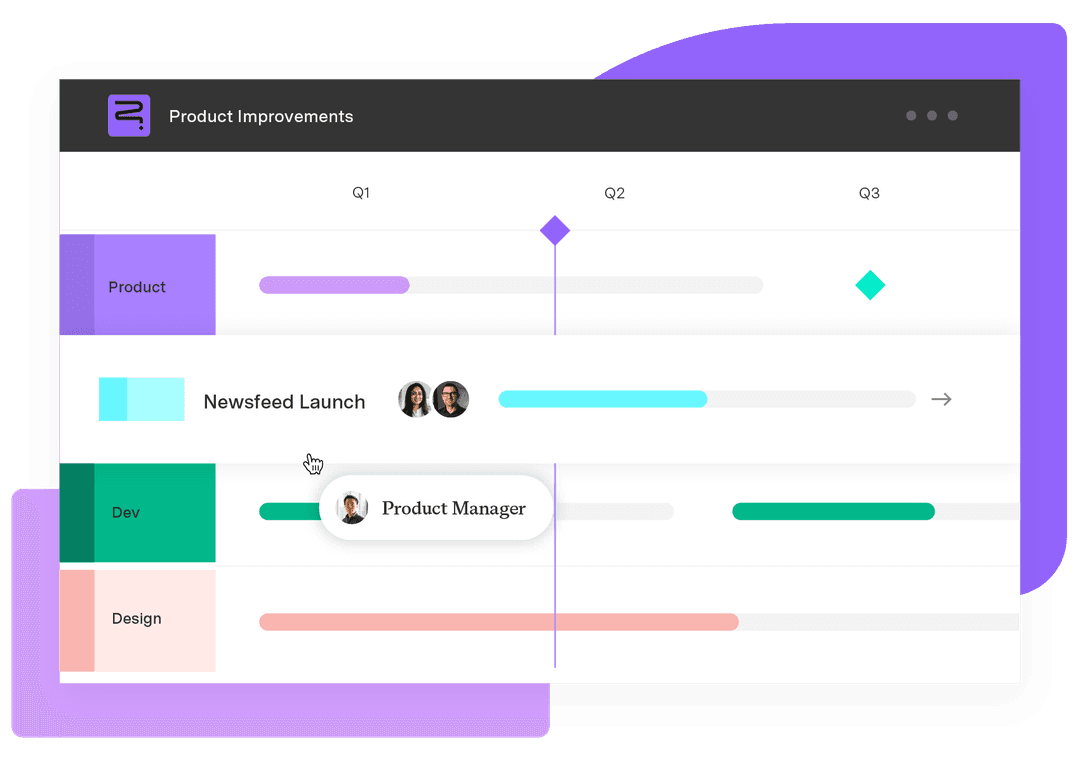Idea development: How to turn concepts into actionable plans
Tempo Team
Teams should challenge a project’s core assumptions from the outset to avoid costly setbacks later. Without early validation, fundamental flaws go unnoticed during development, often requiring time‑consuming and expensive rework.
An effective idea development process introduces early-stage evaluation, allowing teams to test and refine concepts before committing to full implementation. This proactive approach identifies issues sooner to improve the chances of successful product development.
Here, we’ll explore why idea development is critical and outline the key stages that lead to better project outcomes.
What is idea development?
Idea development turns rough concepts into valuable, actionable solutions that address real business and customer needs.
The idea development process often involves product development teams and begins with collecting user input and conducting market research. From there, teams screen and assess ideas for feasibility and potential impact. As they move through these steps, they gather insights that can guide decision-making if priorities shift later. Teams then expand promising concepts into detailed plans and address risks through early testing and validation.
Why idea development matters
Idea development is crucial for transforming concepts into successful products or services. Here's why:
Validates market demand
Many businesses fail because they enter saturated markets or lack a clear point of differentiation. In an analysis of 111 startup postmortems, CB Insights found that 35% failed due to "no market need." However, the root causes often run deeper – poor timing, overestimated demand, or unclear positioning can all play a role.
Idea development helps teams identify and address these risks early by testing assumptions against real market conditions. Validation activities, such as customer interviews, demand testing (e.g., paid ads), and strengths, weaknesses, opportunities, and threats (SWOT) analysis, help determine whether a problem is worth solving and who’s already trying to solve it.
Reduces resource waste
Pursuing unvalidated ideas often leads to wasted time and budget. A structured idea development process helps organizations allocate resources effectively by focusing on concepts that are more likely to succeed.
Enhances cross-functional collaboration
Idea development fosters collaboration across departments, sourcing diverse perspectives to fuel an idea’s evolution. This cross-functional input identifies challenges early and ensures the concept is technically feasible and satisfies market needs.
Aligns customer needs and business goals
Validation and feedback loops determine whether the problem is worth solving and whether the proposed solution resonates with customers. This process keeps teams grounded in external realities, preventing them from pursuing internal assumptions that may not align with actual market needs.
Builds a repeatable system for growth
A consistent idea development framework allows organizations to replicate successful innovation practices across projects. This repeatability streamlines the innovation process and fosters a culture of adaptability, allowing organizations to scale their efforts more effectively.
6 stages of idea development
Idea development typically occurs early in the project life cycle, before full implementation begins. It involves six steps, from idea to implementation, which provide structure and clarity to guarantee only the most promising, relevant concepts move forward.
1. Idea generation
Gather ideas from various sources, such as customer interviews, employee suggestions, competitor analysis, and market research. Encourage creativity without judgment, and use brainstorming techniques like mind mapping, SCAMPER, or the Six Thinking Hats.
Prioritize quantity over quality during the idea generation process. A diverse idea pipeline can reveal unexpected opportunities and drive innovative solutions.
2. Idea screening
Next, evaluate the raw ideas and screen out options that don’t align with the business strategy. This step avoids wasting time and resources on unviable concepts.
Scoring models – such as those assessing desirability (customer appeal), viability (business alignment), feasibility (technical reality), and strategic fit – provide structured ways to evaluate an idea’s potential across various criteria. A reach, impact, confidence, and effort (RICE) analysis helps teams identify the most promising projects.
This stage fosters early alignment across teams by pinpointing which ideas are worth developing.
3. Concept development
Expand strong ideas into workable concepts by defining the problem and clarifying how the idea will deliver value. Develop user personas and craft problem statements that highlight their needs. These elements contribute to the value proposition and prevent scope creep.
Refine the concept so it’s specific, clear, and actionable enough for meaningful analysis. The goal is to promote a shared understanding of the idea and its practical application.
4. Idea validation
Before moving forward, test the concept in real-world conditions to confirm its viability. Validation can take many forms, including customer feedback, usability tests, or small pilot launches.
In business-to-business settings, this might involve testing demand through landing pages or direct conversations with key accounts. For consumer apps, rapid wireframe testing using prototype tools like Figma can gauge user interest.
Validation verifies that the idea effectively solves the intended problem. It also identifies potential flaws early, when changes are easier and more cost-effective to implement.
5. Planning and prioritization
In this stage, create a delivery plan, estimate required resources, and identify key dependencies. Collaborate with your team to define the scope, assign responsibilities, and align the idea with existing product or project roadmaps.
Prioritize ideas based on how well they support broader business goals, especially when multiple promising concepts compete for attention.
Consider using a dual‑track agile framework to streamline the handoff to development. Assign part of your team to run discovery (conducting experiments and building prototypes) while the rest focus on delivery sprints. This parallel approach allows validated stories to flow directly into development without delays.
6. Implementation
Finally, turn the validated concept into a working solution. Development teams carry the idea through build, testing, and release. Success during this stage depends on the execution of the earlier steps. A well-developed idea moves through implementation with few surprises or setbacks.
After the product launch, track performance, gather feedback, and identify areas for improvement. Ongoing iteration helps the solution deliver lasting value.
Managing idea development with Tempo
Tempo’s suite of project management tools integrates directly with Jira, enabling teams to manage idea development within their existing workflows. From early-stage ideation to execution, Tempo helps teams capture and advance ideas without losing momentum.
Use Idea Manager to collect and manage early-stage concepts. Teams can submit ideas in Jira, tag them by initiative or team, and score them using custom criteria specific to the project.
Once an idea gains traction, Strategic Roadmaps helps move it to the next phase. Teams can create and communicate clear plans, turn validated ideas into initiatives, and align execution with business objectives. Strategic Roadmaps also gives stakeholders visibility into how initiatives connect across the organization.
Together, Idea Manager and Strategic Roadmaps prevent ideas from stalling and support a strong link between strategy and delivery.














































